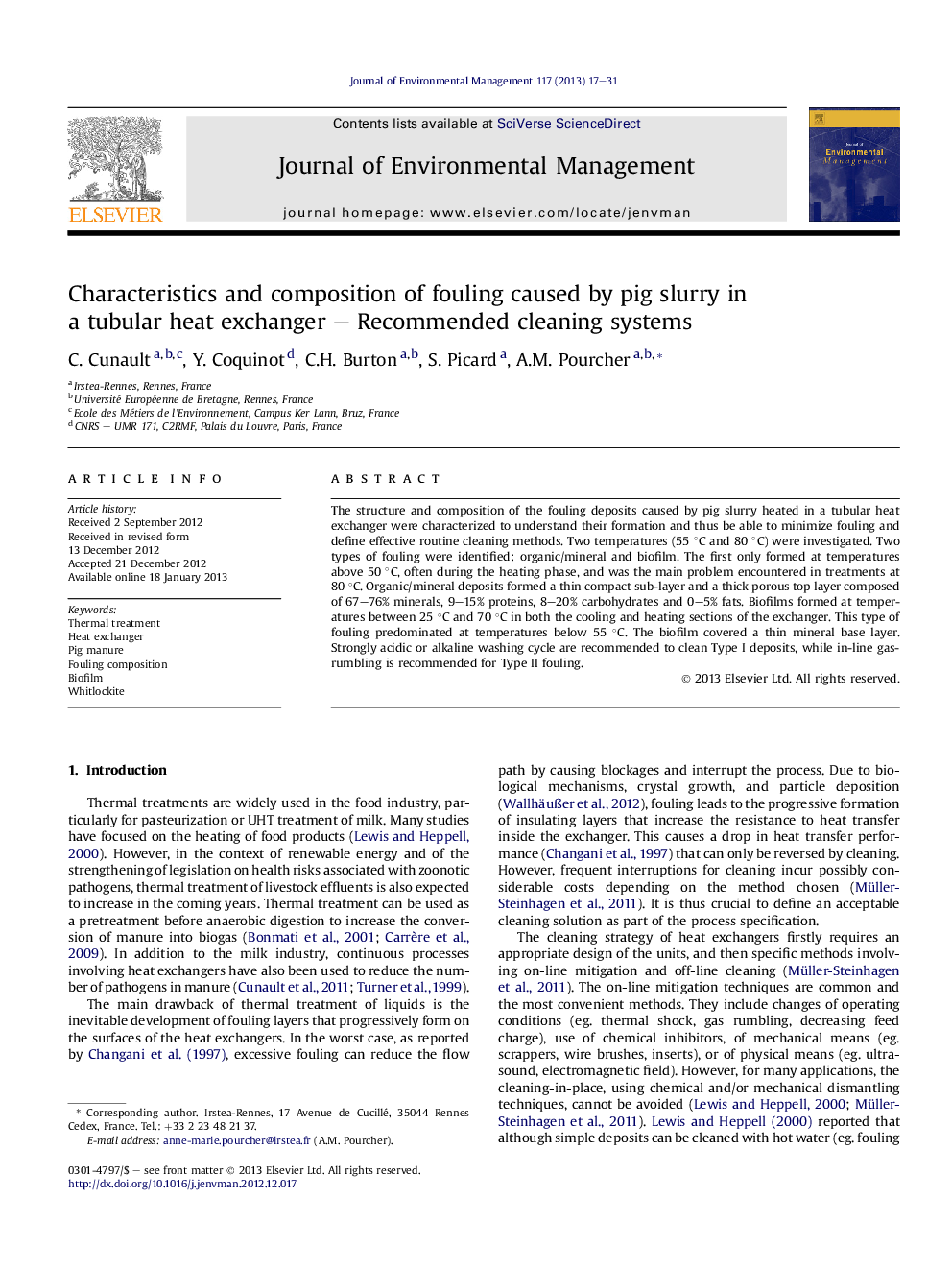| Article ID | Journal | Published Year | Pages | File Type |
|---|---|---|---|---|
| 1056297 | Journal of Environmental Management | 2013 | 15 Pages |
The structure and composition of the fouling deposits caused by pig slurry heated in a tubular heat exchanger were characterized to understand their formation and thus be able to minimize fouling and define effective routine cleaning methods. Two temperatures (55 °C and 80 °C) were investigated. Two types of fouling were identified: organic/mineral and biofilm. The first only formed at temperatures above 50 °C, often during the heating phase, and was the main problem encountered in treatments at 80 °C. Organic/mineral deposits formed a thin compact sub-layer and a thick porous top layer composed of 67–76% minerals, 9–15% proteins, 8–20% carbohydrates and 0–5% fats. Biofilms formed at temperatures between 25 °C and 70 °C in both the cooling and heating sections of the exchanger. This type of fouling predominated at temperatures below 55 °C. The biofilm covered a thin mineral base layer. Strongly acidic or alkaline washing cycle are recommended to clean Type I deposits, while in-line gas-rumbling is recommended for Type II fouling.
► Two types of fouling occur in heat exchangers treating pig manure at 55 and 80 °C. ► Type I is mineral/organic and adheres tightly to the surface of the heat exchanger. ► Type I can be removed by strong acid or alkaline treatment. ► Type II is mainly comprised of a biofilm. ► Type II can be removed in line by gas-rumbling and an acid wash.
